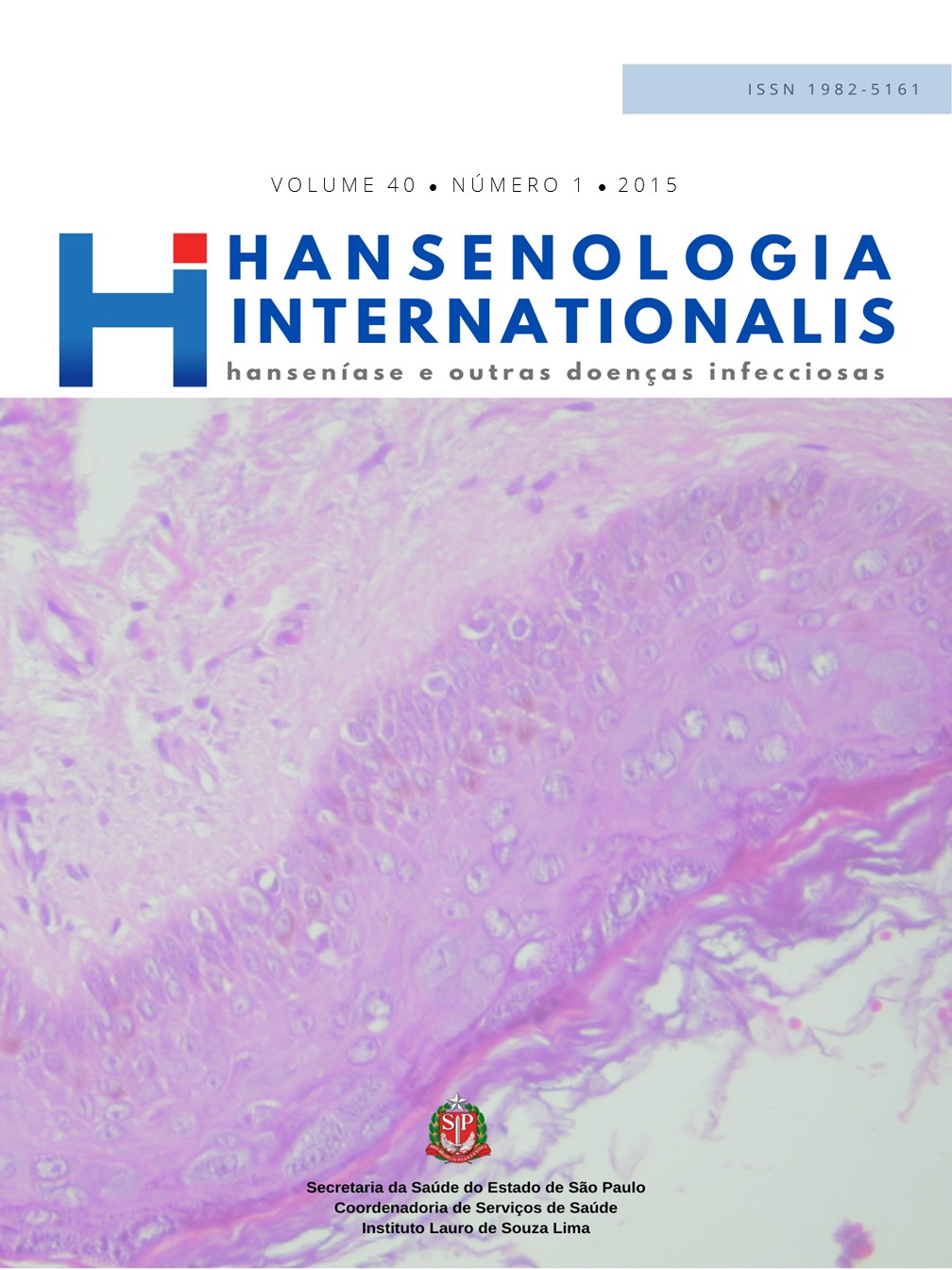Abstract
Introduction: Leprosy, with an average of 47,000 new cases registered each year, is endemic in Brazil. Clinical pharmacy, an activity developed by the pharmacist in the pharmacotherapeutic followup of patients, is used to monitor adverse events, study possible interactions and propose therapeutic regimens to attain better results. Objective: To describe the implementation of a clinical pharmacy in leprosy patients at a government health clinic in Sao Paulo. Methods: The Dader method was applied to obtain obtaining the pharmacotherapeutic history of patients and an assessment of their condition was made to identify and resolve possible negative medication-related outcomes. Results: Most of the 25 patients were male, Caucasian, aged 40-59 years old and with no more than four years of schooling. Conclusion: All patients had negative medicationrelated outcomes. Fifty pharmaceutical interventions were necessary with the most common being adjustments to the drug administration time and guidance on non-pharmacological measures.
References
2. Portal da Saúde SUS [Internet]. Brasília: Ministério da Saúde; 2015. [atualizado em 2015 Jan 22; citado em 2016 Fev 11]. Dia Mundial - Ministério da Saúde alerta para diagnóstico precoce de hanseníase; [aproximadamente 1 tela]. Disponível em: http://portalsaude.saude.gov.br/index.php/cidadao/principal/agencia-saude/16302-ministerio-da-saude-alerta-para-diagnostico-precoce-de-hanseniase
3. Gusmão JL, Giovani GF, Silva GV, Ortega KC, Mion Junior D. Adesão ao tratamento em hipertensão em hipertensão arterial sistólica isolada. RevBrasHipertens. 2009;16(1);38-43.
4. Castro MS, Chemello C, Pilger D, Junges F, Bohnen L, Zimmerman LM, et al. Contribuição da atenção farmacêutica no tratamento de pacientes hipertensos.RevBras Hipertensos.2006;13(3):198-202.
5. Ivama AM, Noblat L, Castro MS, Oliveira NVBV, Jaramillo NM, Rech N. Consenso brasileiro de atenção farmacêutica: proposta. Brasília: Organização Pan--Americana da Saúde; 2002. 24 p.
6. Brune MFSS, Ferreira EE, Ferrari CKB. O método Dáder na atenção farmacêutica em pacientes hipertensos no município de Pontal do Araguaia – MT, Brasil. O Mundo da Saúde. 2014;38(4):402-4.
7. Machuca M, Llimós FF, Faus MJ. Método Dáder: guia de seguimento farmacoterapêutico (versão português europeu). 3a ed. Granada: Gicufulht; 2005. 45 p.
8. Hernandez DS, Castro MMS, Dáder JF. Método Dáder: manual de seguimento farmacoterapêutico. 3a ed. Alfenas: Editora Universidade Federal de Alfenas; 2014. 128 p.
9. Opromolla DA, Costa HC, Oliveira PRD. Resistência medicamentosa múltipla secundária na hanseníase. Hansen Int. 1993;18(1/2):11-6.
10. Madeira S, Fochiani IM, Silva AL, Bosco MRGM. Resistência medicamentosa secundária na hanseníase. Hansen Int.1997;22(1):50-127.
11. Lira KB, Leite JJG, Maia DCBSC, Freitas RMF, Feijão AR.Knowledge of the patients regarding leprosy and adherence to treatment. Braz J Infect Dis. 2012;16(5):472-5.
12. Weiand D, Smith WC, Muzaffarullah S. Qualitative assessment of medication adherence at an urban leprosy outpatient clinic in Hyderabad, India.Lepr Rev. 2011;82(1):70–3.
13. Chichava OA, Ariza L, Oliveira AR, Ferreira AC, Silva LF, Barbosa NA, et al. Reasons for interrupting multidrug therapy against leprosy: the patients’ point of view. Lepr Rev. 2011;82(1):78–9.
14. Weiand D, Thoulass, Smith CS. Assessing and improving adherence with multidrug therapy. Lepr Rev.2012 Sept;83(3):282–91.
15. Dewulf NLS, Monteiro RA, Passos ADC, Vieira EM, Troncon LEA. Adesão ao tratamento medicamentoso em pacientes com doenças gastrointestinais crônicas acompanhados no ambulatório de um hospital universitário. RevBrasCiên Farm. 2006 Out– Dez;42(4):575-84.
16. Barr PD. Hazards of modern diagnosis and therapy: the price we pay. J Am Med Assoc. 1955 Dec 10;159(15):1452-6
17. Cipolle RJ, Strand LM, Morley PC.El ejercicio de laatencion farmacêutica. Madrid: McGraw Hill; 2002.
18. Steel, K. Gertman PM, Crescenzi C, Anderson J. Latrogenic illness on general medical service at a university hospital.QualSaf Health Care. 2004;13(1):76-80.
19. Fleming ST. Complications, adverse events and iatrogenesis: classifications and quality of care measure men tissues. Clin Perform Qual Health Care.1996;4(3):137-47.
20. Bates DW.Drug and adverse drug reactions. How worried should we be? JAMA. 1998 Apr;279(15):1216-7.
21. Soler O, Rosa MB, Fonseca AL, Fassy MF, Machado MC, Silva RMC,et al. Assistência farmacêutica clínica na atenção primária à saúde por meio do Programa Saúde da Família. RevBras Farm. 2010;91(1):37-45.
22. Balestre KCBE, Teixeira JJV, Crozatti MTL, Cano FG, Gunther LSA. Relato de um seguimento farmacoterapêutico de pacientes portadores de diabetes do Programa Saúde da Família de Atalaia, Paraná. RevCiêncFarm Básica Apl. 2007;28(2):203-8.
23. Leape LL, Cullen DJ, Clapp MD, Burdick E, Demonaco HJ, Erickson JI, et al. Pharmacist participation on physician rounds and adverse drug events in the intensive care unit.JAMA. 1999 Jul; 282(3):267-70.
24. Planas MCG.(Cord). Libro de La Sociedad Espanola de Farmacia Hospitalaria [Internet]. 3a ed. Madrid, 2002. [Acesso em 2015 Fev 21]. Disponível em: http://www.sefh.es/sefhpublicaciones/fichalibrolibre.php?id=24
25. Romano-Lieber NS, Teixeira JJV, Farhat FCLG, Ribeiro E, Crozatti MTL, Oliveira GSAA. A revisão dos estudos de intervenção do farmacêutico no uso de medicamentos por pacientes idosos. Cad Saúde Pública. 2002;18(6):1499-507.
26. Alano GM. Reflexão e contribuição para uma nova prática os serviços farmacêuticos voltados ao paciente sob a perspectiva de farmacêuticos do Estado de Santa Catarina [dissertação]. Florianópolis: Universidade Federal de Santa Catarina; 2005.
27. Oliveira AB, Oyakawa CN; Miguel MD, Zanin SMW, Montrucchio DP. Obstáculos da atenção farmacêutica no Brasil. RevBrasCiênc Farm. 2005;41(4):409-13.
28. Galato D, Alano GM, Trauthman SC, Vieira AC. A dispensação de medicamentos: uma reflexão sobre o processo para prevenção, identificação e resolução de problemas relacionados à farmacoterapia. RevBrasCiên Farm.2008 Jul – Set;44(3):466-75.
This journal is licensed under a Creative Commons Attribution 4.0 International License.
